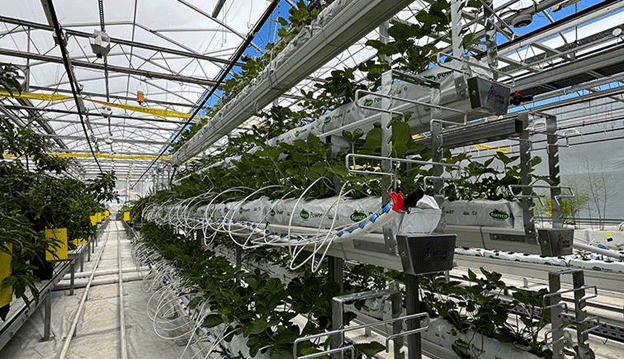Canada’s greenhouse sector is experiencing unprecedented growth, becoming a cornerstone of the nation’s agricultural output. With 920 greenhouses specializing in fruits and vegetables spread over more than 5,000 acres, the sector produces over 800,000 tonnes of tomatoes, cucumbers, peppers, lettuce, strawberries, and more. This remarkable production capacity highlights the sector’s potential but also brings forth the need to address critical challenges in infrastructure, energy, and labor.
Regional Dynamics and Innovations
Two-thirds of Canada’s greenhouse production is concentrated in Ontario, particularly in Essex County. This region benefits from a favorable microclimate and proximity to the U.S. border, facilitating both ideal growing conditions and easy access to export markets. Family farms in Essex County have heavily invested in greenhouse construction, research, and cogeneration of energy and heat, creating a unique greenhouse hub. The Center for Horticultural Innovation in Leamington exemplifies this investment, trialing new production technologies such as bug-zapping drones to advance the industry.
Ontario’s greenhouse sector also benefits from various support mechanisms, including the Greenhouse Competitiveness and Innovation Initiative (GCII), energy efficiency incentives, and numerous research projects under the Ontario Agri-Food Research Innovation Alliance. Additionally, energy expansion projects are underway to support the region’s growth.
Other provinces are also making significant strides in greenhouse production. Quebec, through its ‘2020-2025 Greenhouse Growth Strategy,’ aims to double its greenhouse operations to approximately 620 acres by 2025 with incentives like energy consumption rebates. Alberta is focusing on agri-tech innovations, including research on novel strawberry and tomato seed varieties and the integration of transparent solar panels in greenhouses. British Columbia is advancing its greenhouse sector through the B.C. Centre for Agritech Innovation at Simon Fraser University, as part of the StrongerBC Economic Plan.
Export Opportunities and Energy Challenges
Canada’s greenhouse vegetables account for 39% of all fresh produce exports, valued at over $1.4 billion. Ontario contributes 88% of this export value, primarily to the U.S. However, there are opportunities to expand exports to other markets, including Japan, France, and Taiwan. The U.S. demand for fresh fruits and vegetables exceeds its production capacity, making it a key market for Canadian greenhouse products. Marketing these products as high-tech and low-carbon could capitalize on consumers’ rising preference for sustainable products.
Energy remains a significant challenge for the greenhouse sector. Natural gas, electricity, and other fuels, which are critical for heating, lighting, and CO2 production, have seen costs rise by 55% from 2013 to 2023. This has led to increased greenhouse gas emissions, with natural gas being a major contributor. Some operations, like Under Sun Acres in Leamington, have developed co-generation facilities that optimize energy use by producing electricity and utilizing waste heat for greenhouse heating.
Productivity, Land Use, and Labor
Greenhouses in Canada are highly efficient, producing around 8.5 times more per area of land compared to field production. However, yields have plateaued over the past decade. Innovations such as dynamic lighting systems, optimized growing infrastructure, and advanced genetics are being explored to overcome this stagnation.
Labor is another critical factor, accounting for 29% of greenhouse operating expenses. While harvesting remains labor-intensive, innovations like conveyor belt harvesters and robotics in packaging could reduce costs and improve efficiency.
Regulatory and Policy Challenges
The greenhouse sector faces regulatory challenges that can impede growth. Controlled environment agriculture often falls into a regulatory gray area, complicating access to resources and development approvals. Higher taxes and energy costs compared to U.S. counterparts also affect competitiveness. Additionally, accessing sufficient water can be difficult, with operators having to invest in irrigation infrastructure or navigate lengthy permit processes.
Canada’s greenhouse sector is well-positioned to meet the growing demand for fresh produce both domestically and internationally. However, addressing challenges related to energy, labor, and regulatory frameworks is crucial for sustaining this growth. By continuing to innovate and improve efficiency, Canada’s greenhouses can play a vital role in ensuring a resilient and sustainable food system.










